Cross-Shore Profile Evolution after an Extreme Erosion Event—Palanga, Lithuania
Abstract
1. Introduction
2. Materials and Methods
3. Results
4. Discussion
5. Conclusions
Author Contributions
Funding
Institutional Review Board Statement
Informed Consent Statement
Data Availability Statement
Acknowledgments
Conflicts of Interest
References
- Aagaard, T.; Hughes, M.G. Equilibrium shoreface profiles: A sediment transport approach. Mar. Geol. 2017, 390, 321–330. [Google Scholar] [CrossRef]
- Baldock, T.E.; Birrien, F.; Atkinson, A.; Shimamoto, T.; Wu, S.; Callaghan, D.P.; Nielsen, P. Morphological hysteresis in the evolution of beach profiles under sequences of wave climates—Part 1; observations. Coast. Eng. 2017, 128, 92–105. [Google Scholar] [CrossRef]
- Sanchez-Arcilla, A.; Caceres, I. An analysis of nearshore profile and bar development under large scale erosive and accretive waves. J. Hydraul. Res. 2017, 56, 231–244. [Google Scholar] [CrossRef]
- Baldock, T.E.; Alsina, J.A.; Caceres, I.; Vicinanza, D.; Contestabile, P.; Power, H.; Sanchez-Arcilla, A. Large-scale experiments on beach profile evolution and surf and swash zone sediment transport induced by long waves, wave groups and random waves. Coast. Eng. 2011, 58, 214–227. [Google Scholar] [CrossRef]
- Baldock, T.E.; Manoonvoravong, P.; Pham, K.S. Sediment transport and beach morphodynamics induced by free long waves, bound long waves and wave groups. Coast. Eng. 2010, 57, 898–916. [Google Scholar] [CrossRef]
- Beuzen, T.; Turner, I.L.; Blenkinsopp, C.E.; Atkinson, A.; Flocard, F.; Baldock, T.E. Physical model study of beach profile evolution by sea level rise in the presence of seawalls. Coast. Eng. 2018, 136, 172–182. [Google Scholar] [CrossRef]
- Austin, M.; Masselink, G.; O’Hare, T.; Russell, P. Onshore sediment transport on a sandy beach under varied wave conditions: Flow velocity skewness, wave asymmetry or bed ventilation? Mar. Geol. 2009, 259, 86–101. [Google Scholar] [CrossRef]
- Kobayashi, N.; Zhu, T.; Mallavarapu, S. Equilibrium beach profile with net cross-shore sand transport. J. Waterw. Port Coast. Ocean Eng. 2018, 144. [Google Scholar] [CrossRef]
- Patterson, D.C.; Nielsen, P. Depth, bed slope and wave climate dependence of long term average sand transport across the lower shoreface. Coast. Eng. 2016, 117, 113–125. [Google Scholar] [CrossRef]
- Roelvink, J.A.; Stive, M.F.J. Bar-generating cross-shore flow mechanisms on a beach. J. Geophys. Res. 1989, 94, 4785–4800. [Google Scholar] [CrossRef]
- Žaromskis, R. Impact of different hydrometeorological condition on Palanga shore zone relief. Geografija 2005, 41, 17–24. [Google Scholar]
- Bagdanavičiūtė, I.; Kelpšaitė, L.; Daunys, D. Assessment of shoreline changes along the Lithuanian Baltic Sea coast during the period 1947–2010. Baltica 2012, 25, 171–184. [Google Scholar] [CrossRef]
- Soomere, T.; Viška, M. Simulated wave-driven sediment transport along the eastern coast of the Baltic Sea. J. Mar. Syst. 2014, 129, 96–105. [Google Scholar] [CrossRef]
- Knaps, R. Sediment transport in the coastal area of the Eastern Baltic. In Development of Marine Coasts within the Conditions of Fluctuation Movements of the Earth Crust; Valgus: Tallinn, Estonia, 1966. [Google Scholar]
- Viška, M. Sediment Transport Patterns along the Eastern Coasts of the Baltic Sea; Tallin University of Technology: Tallinn, Estonia, 2014. [Google Scholar]
- Žaromskis, R.; Gulbinskas, S. Main patterns of coastal zone development of the Curonian Spit, Lithuania. Baltica 2010, 23, 146–156. [Google Scholar]
- Lapinskis, J. Coastal sediment balance in the eastern part of the Gulf of Riga (2005–2016). Baltica 2017, 30, 87–95. [Google Scholar] [CrossRef]
- Bagdanavičiūtė, I.; Kelpšaitė-Rimkienė, L.; Galinienė, J.; Soomere, T. Index based multi-criteria approach to coastal risk assesment. J. Coast. Conserv. 2018. [Google Scholar] [CrossRef]
- Eberhards, G.; Grine, I.; Lapinskis, J.; Purgalis, I.; Saltupe, B.; Toklere, A. Changes in Latvia’s seacoast (1935–2007). Baltica 2009, 22, 12. [Google Scholar]
- Bagdanavičiūtė, I.; Kelpšaitė, L.; Soomere, T. Multi-criteria evaluation approach to coastal vulnerability index development in micro-tidal low-lying areas. Ocean Coast. Manag. 2015, 104, 124–135. [Google Scholar] [CrossRef]
- Eberhards, G.; Lapinskis, J. Processes on the Latvian coast of the Baltic Sea. In Atlas; University of Latvia: Riga, Latvia, 2008; p. 64. [Google Scholar]
- Bagdanavičiutė, I.; Kelpšaitė, L.; Daunys, D. Long term shoreline changes of the Lithuanian Baltic Sea continental coast. In Proceedings of the 2012 IEEE/OES Baltic International Symposium (BALTIC), Klaipeda, Lithuania, 8–10 May 2012; pp. 1–6. [Google Scholar]
- Łabuz, T.A.; Grunewald, R.; Bobykina, V.; Chubarenko, B.; Česnulevičius, A.; Bautrėnas, A.; Morkūnaitė, R.; Tonisson, H. Coastal dunes of the Baltic Sea shores: A review. Quaest. Geogr. 2018, 37, 47–71. [Google Scholar] [CrossRef]
- Povilanskas, R.; Riepšas, E.; Armaitienė, A.; Dučinskas, K.; Taminskas, J. Shifting Dune Typesof the Curonian Spit and Factors of Their Development. Baltic For. 2011, 17, 215–226. [Google Scholar]
- Urboniene, R.; Kelpšaite, L.; Borisenko, I. Vegetation impact on the dune stability and formation on the Lithuanian coast of the Baltic sea. J. Environ. Eng. Landsc. Manag. 2015, 23, 230–239. [Google Scholar] [CrossRef]
- Kelpšaitė, L.; Dailidienė, I. Influence of wind wave climate change to the coastal processes in the eastern part of the Baltic Proper. J. Coast. Res. 2011, 64, 220–224. [Google Scholar]
- Soomere, T.; Räämet, A. Spatial patterns of the wave climate in the Baltic Proper and the Gulf of Finland. Oceanologia 2011, 53, 335–371. [Google Scholar] [CrossRef]
- Pindsoo, K.; Soomere, T.; Zujev, M. Decadal and long-term variations in the wave climate at the Latvian coast of the Baltic Proper. In Proceedings of the Ocean: Past, Present and Future—2012 IEEE/OES Baltic International Symposium, BALTIC 2012, Klaipėda, Lithuania, 8–11 May 2012. [Google Scholar]
- Suursaar, Ü.; Kullas, T. Decadal variations in waveheights off Cape Kelba, Saaremaa Island, andtheir relationships withchanges in wind climate. Oceanologia 2009, 51, 39–61. [Google Scholar] [CrossRef]
- Povilanskas, R.; Armaitienė, A. Seaside resort-hinterland Nexus: Palanga, Lithuania. Ann. Tour. Res. 2011, 38, 1156–1177. [Google Scholar] [CrossRef]
- Dubra, V. Influence of hydrotechnical structures on the dynamics of sandy shores: The case of Palanga on the Baltic coast. Baltica 2006, 19, 3–9. [Google Scholar]
- Jarmalavičius, D. Sea Coast Dynamics Next to the Palanga in Last Century. Available online: https://www.lrt.lt/naujienos/tavo-lrt/15/47235/d-jarmalavicius-juros-kranto-ties-palanga-kaita-per-paskutini-simtmeti-radijo-paskaita (accessed on 29 November 2019).
- Jarmalavicius, D.; Šmatas, V.; Stankunavicius, G.; Pupienis, D.; Žilinskas, G. Factors controlling coastal erosion during storm events. J. Coast. Res. 2016, 1, 1112–1116. [Google Scholar] [CrossRef]
- Jarmalavičius, D.; Satkunas, J.; Žilinskas, G.; Pupienis, D. Dynamics of beaches of the Lithuanian coast (the Baltic Sea) for the period 1993-2008 based on morphometric indicators. Environ. Earth Sci. 2012, 65, 1727–1736. [Google Scholar] [CrossRef]
- Ulbrich, U.; Fink, A.H.; Klawa, M.; Pinto, J.G. Three extreme storms over Europe in December 1999. Weather 2001, S56, 10. [Google Scholar] [CrossRef]
- Mäll, M.; Suursaar, Ü.; Nakamura, R.; Shibayama, T. Modelling a storm surge under future climate scenarios: Case study of extratropical cyclone Gudrun (2005). Nat. Hazards 2017, 89, 1119–1144. [Google Scholar] [CrossRef]
- Fink, A.H.; Brücher, T.; Ermert, V.; Krüger, A.; Pinto, J.G. The European storm Kyrill in January 2007: Synoptic evolution, meteorological impacts and some considerations with respect to climate change. Nat. Hazards Earth Syst. Sci. 2007, 9, 405–423. [Google Scholar] [CrossRef]
- Orviku, K.; Suursaar, Ü.; Tonisson, H.; Kullas, T.; Rivis, R.; Kont, A. Coastal changes in Saaremaa Island, Estonia, caused by winter storms in 1999, 2001, 2005 and 2007. J. Coast. Res. 2007, II, 1651–1655. [Google Scholar]
- Žilinskas, G. Distinguishing priority sectors for the Lithuanian Baltic Sea coastal management. Baltica 2008, 21, 85–94. [Google Scholar]
- Stankevičius, A. Conditions of the Baltic Sea environment; JTD, A., Ed.; AAA JTD: Vilnius, Lithuania, 2013. [Google Scholar]
- Žilinskas, G.; Pupienis, D.; Jarmalavičius, D. Possibilities of Regeneration of Palanga Coastal Zone. J. Environ. Eng. Landsc. Manag. 2010, 18, 92–101. [Google Scholar] [CrossRef]
- United States Army Corps of Engineers. CEM: Coastal Engineering Manual; U.S. Army Corps of Engineers: Washington, DC, USA, 2002. [Google Scholar]
- Soomere, T.; Viška, M.; Eelsalu, M. Spatial variations of wave loads and closure depths along the coast of the eastern Baltic Sea. Est. J. Eng. 2013, 19, 93–109. [Google Scholar] [CrossRef]
- Soomere, T.; Männikus, R.; Pindsoo, K.; Kudryavtseva, N.; Eelsalu, M. Modification of closure depths by synchronisation of severe seas and high water levels. Geo-Mar. Lett. 2017, 37, 35–46. [Google Scholar] [CrossRef]
- Laccetti, G.; Lapegna, M.; Mele, V.; Romano, D.; Szustak, L. Performance enhancement of a dynamic K-means algorithm through a parallel adaptive strategy on multicore CPUs. J. Parallel Distrib. Comput. 2020, 145, 34–41. [Google Scholar] [CrossRef]
- Steinley, D.; Brusco, M.J. Initializing K-means Batch Clustering: A Critical Evaluation of Several Techniques. J. Classif. 2007, 24, 99–121. [Google Scholar] [CrossRef]
- Melnykov, V.; Michael, S. Clustering Large Datasets by Merging K-Means Solutions. J. Classif. 2019. [Google Scholar] [CrossRef]
- Žilinskas, G.; Jarmalavičius, D.; Kulvičienė, G. Assessment of the effects caused by the hurricane ‘Anatoli’ on the Lithuanian marine coast. Geogr. Metraštis 2000, 33, 191–206. [Google Scholar]
- Jarmalavičius, D.; Žilinskas, G.; Pupienis, D.; Kriaučiuniene, J. Subaerial beach volume change on a decadal time scale: The Lithuanian Baltic Sea coast. Z. Geomorphol. 2017, 61, 149–158. [Google Scholar] [CrossRef]
- Pupienis, D.; Jarmalavičius, D.; Žilinskas, G.; Fedorovič, J. Beach nourishment experiment in Palanga, Lithuania. J. Coast. Res. 2014, 70, 490–495. [Google Scholar] [CrossRef]
- Dean, R.G.; Dalrymple, R.A. Coastal Processes with Engineering Applications; Cambridge University Press: Cambridge, UK, 2002. [Google Scholar]
- Miller, J.K.; Dean, R.G. A simple new shoreline change model. Coast. Eng. 2004, 51, 531–556. [Google Scholar] [CrossRef]
- Sousa, W.R.N.d.; Souto, M.V.S.; Matos, S.S.; Duarte, C.R.; Salgueiro, A.R.G.N.L.; Neto, C.A.d.S. Creation of a coastal evolution prognostic model using shoreline historical data and techniques of digital image processing in a GIS environment for generating future scenarios. Int. J. Remote Sens. 2018, 1–15. [Google Scholar] [CrossRef]
- Jara, M.S.; González, M.; Medina, R.; Jaramillo, C. Time-Varying Beach Memory Applied to Cross-Shore Shoreline Evolution Modelling. J. Coast. Res. 2018, 345, 1256–1269. [Google Scholar] [CrossRef]
- Dean, R.G. Equilibrium beach profiles: Characteristics and applications. J. Coast. Res. 1991, 7, 53–84. [Google Scholar]
- Žilinskas, G. Trends in dynamic processes along the Lithuanian Baltic coast. Acta Zool. Litu. 2005, 15, 204–207. [Google Scholar] [CrossRef]
- Gittman, R.K.; Fodrie, F.J.; Popowich, A.M.; Keller, D.A.; Bruno, J.F.; Currin, C.A.; Peterson, C.H.; Piehler, M.F. Engineering away our natural defenses: An analysis of shoreline hardening in the US. Front. Ecol. Environ. 2015, 13, 301–307. [Google Scholar] [CrossRef]
- Summers, A.; Fletcher, C.H.; Spirandelli, D.; McDonald, K.; Over, J.-S.; Anderson, T.; Barbee, M.; Romine, B.M. Failure to protect beaches under slowly rising sea level. Clim. Chang. 2018, 151, 427–443. [Google Scholar] [CrossRef]
- Armstrong, S.B.; Lazarus, E.D. Masked Shoreline Erosion at Large Spatial Scales as a Collective Effect of Beach Nourishment. Earth’s Future 2019, 7, 74–84. [Google Scholar] [CrossRef]
- Romine, B.M.; Fletcher, C.H. Hardening on eroding coasts leads to beach narrowing and loss on Oahu, Hawaii. In Pitfalls of Shoreline Stabilization: Selected Case Studies; Cooper, J., Andrew, G., Pilkey, O., Eds.; Springer Science and Business Media: Dordrecht, The Netherlands, 2012. [Google Scholar]
- De Almeida, L.R.; González, M.; Medina, R. Morphometric characterization of foredunes along the coast of northern Spain. Geomorphology 2019, 338, 68–78. [Google Scholar] [CrossRef]
- Jarmalavičius, D.; Pupienis, D.; Žilinskas, G.; Janušaitė, R.; Karaliūnas, V. Beach-Foredune Sediment Budget Response to Sea Level Fluctuation. Curonian Spit, Lithuania. Water 2020, 12, 583. [Google Scholar] [CrossRef]
- Pellón, E.; de Almeida, L.R.; González, M.; Medina, R. Relationship between foredune profile morphology and aeolian and marine dynamics: A conceptual model. Geomorphology 2020, 351. [Google Scholar] [CrossRef]
- Castelle, B.; Bujan, S.; Ferreira, S.; Dodet, G. Foredune morphological changes and beach recovery from the extreme 2013/2014 winter at a high-energy sandy coast. Mar. Geol. 2017, 385, 41–55. [Google Scholar] [CrossRef]
- Komar, P.D. Coastal erosion processes and impacts: The consequences of Earth’s changing climate and human modifications of the environment. Earth Syst. Environ. Sci. 2011, 285–308. [Google Scholar] [CrossRef]
- Komar, P.D. Beach Processes and Sedimentation; Prentice Hall: Upper Saddle River, NJ, USA, 1998. [Google Scholar]
- Viška, M.; Soomere, T. Simulated and observed reversals of wave-driven alongshore sediment transport at the eastern baltic sea coast. Baltica 2013, 26, 145–156. [Google Scholar] [CrossRef]
- Soomere, T.; Bishop, S.R.; Viška, M.; Räämet, A. An abrupt change in winds that may radically affect the coasts and deep sections of the Baltic Sea. Clim. Res. 2015, 62, 163–171. [Google Scholar] [CrossRef]
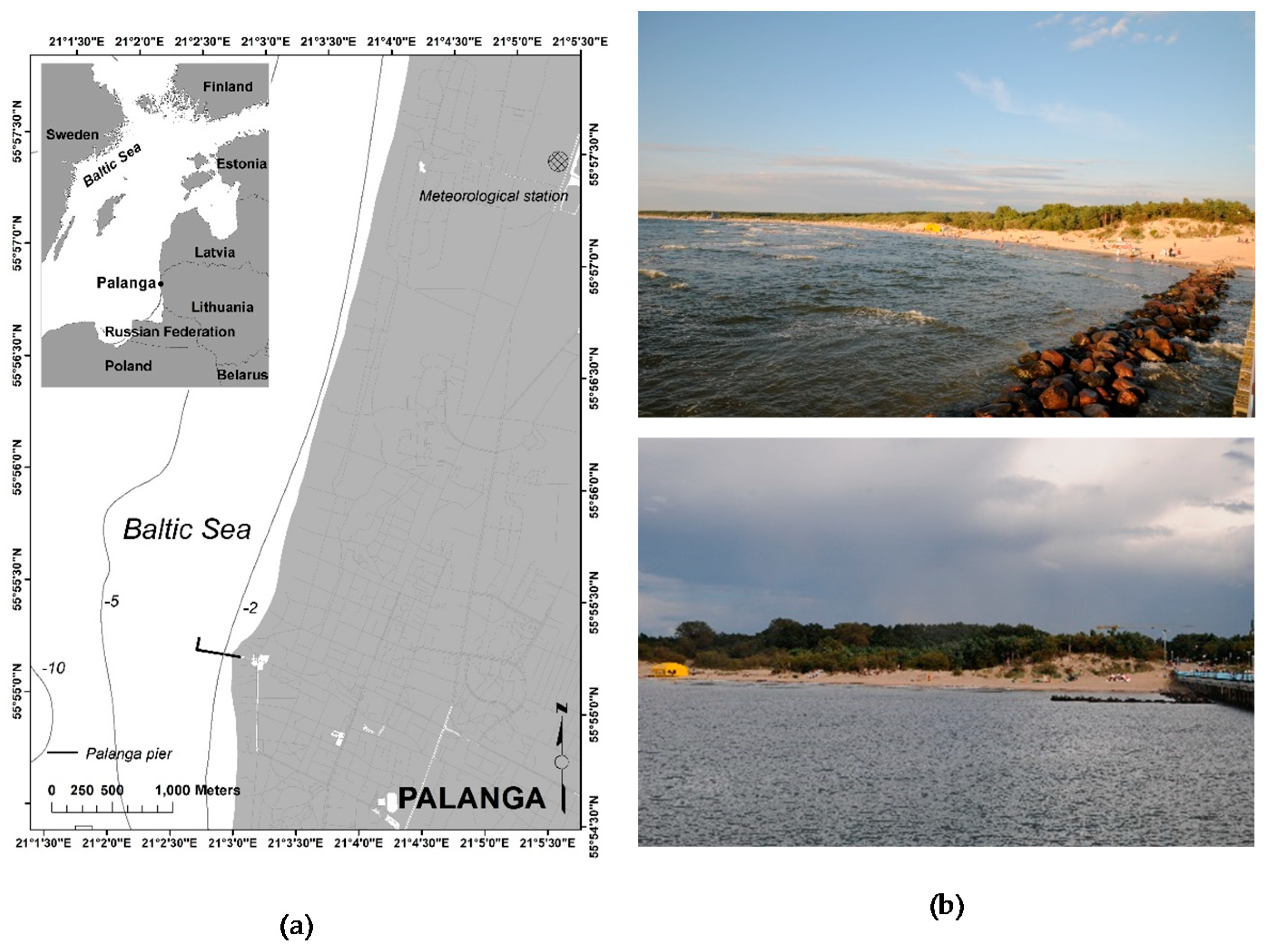
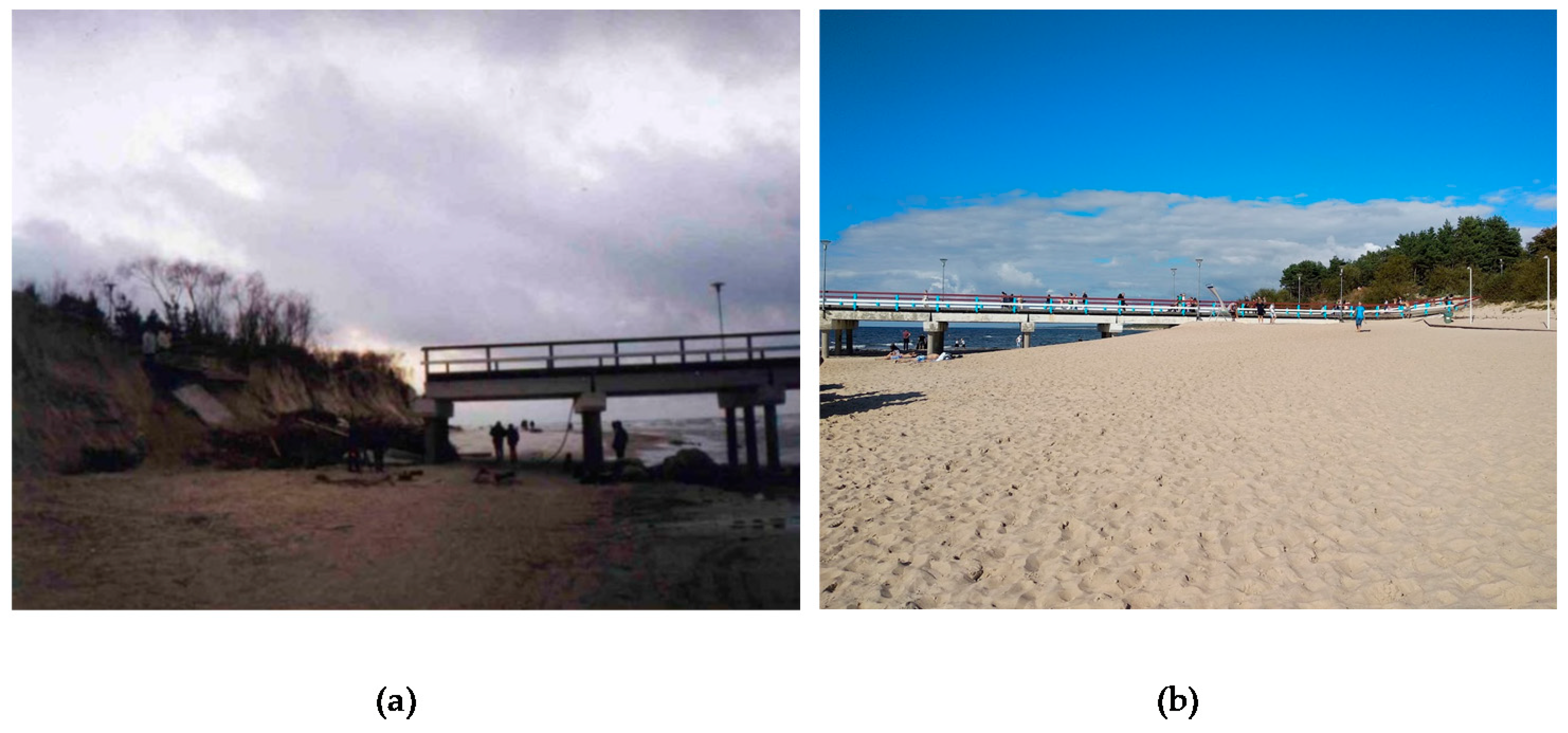
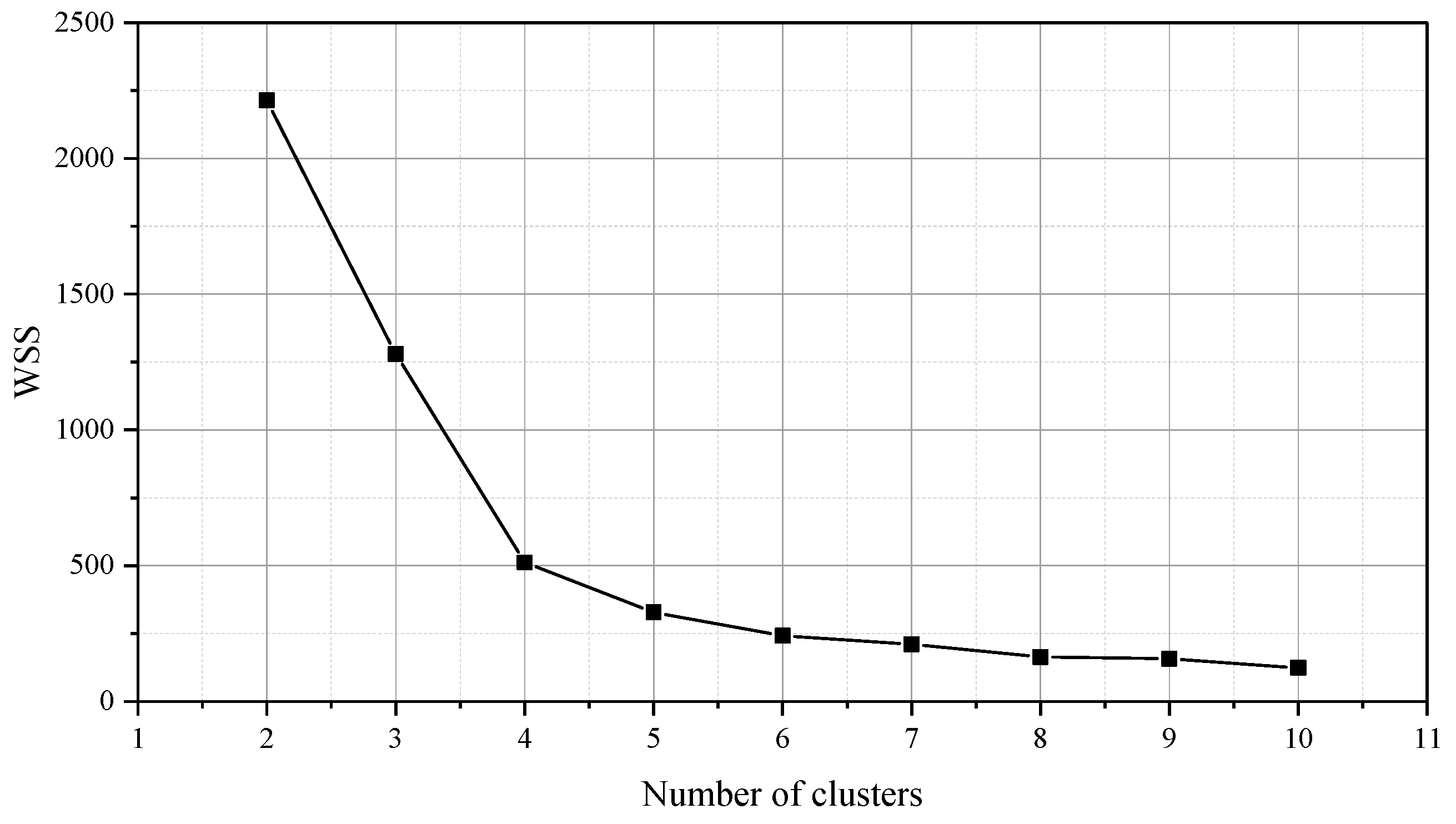
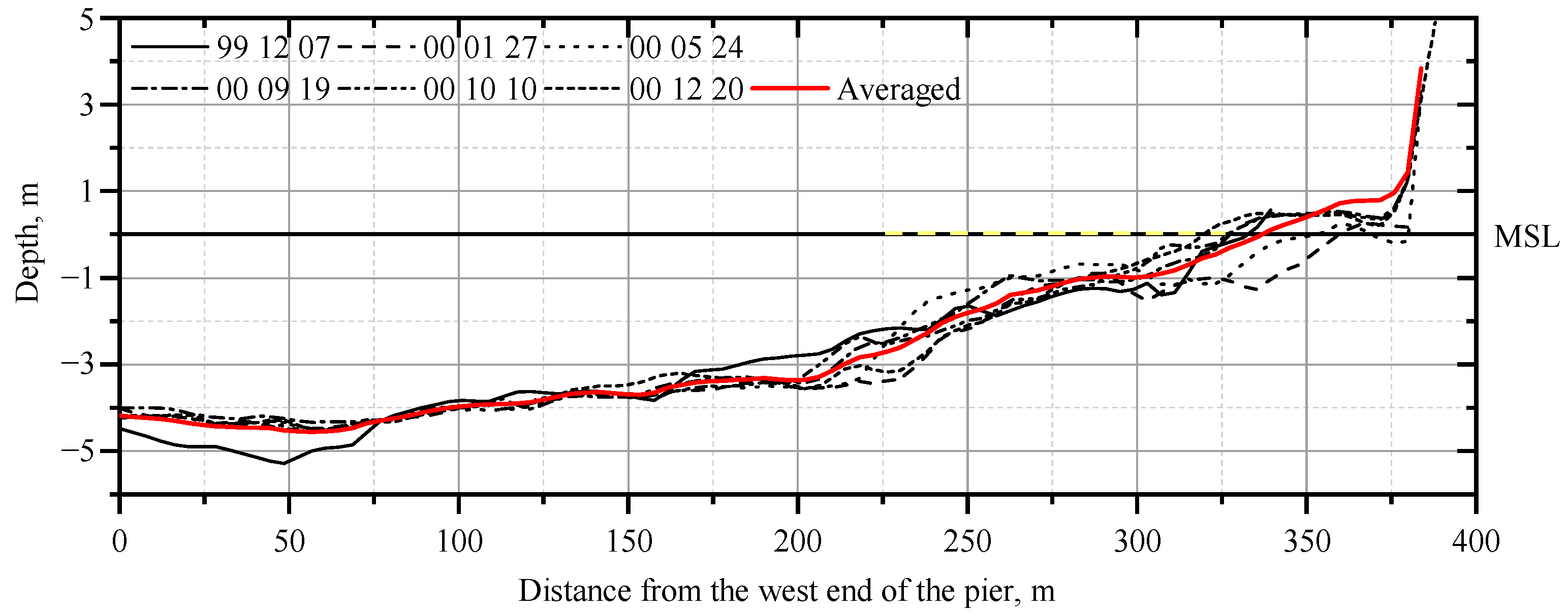
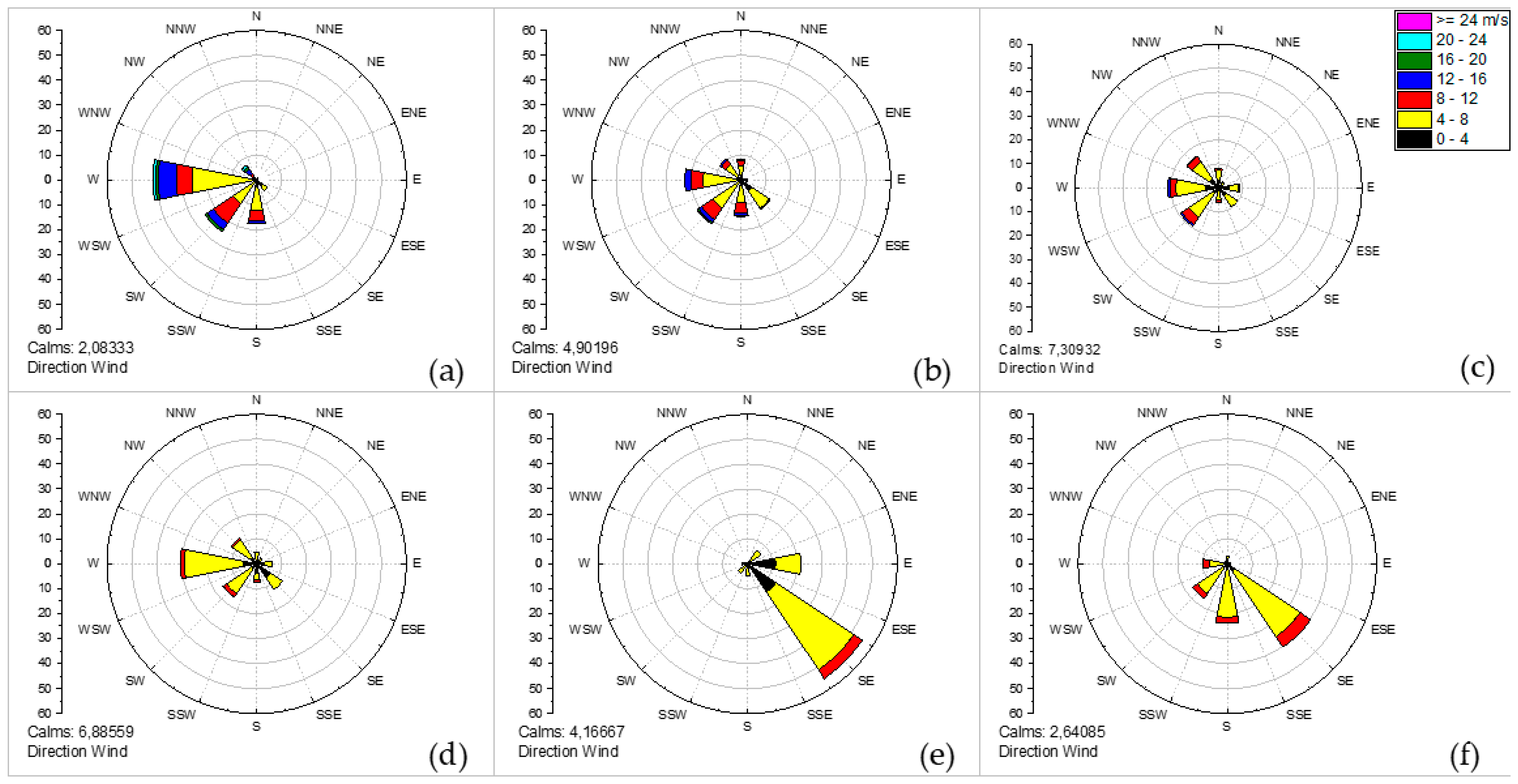
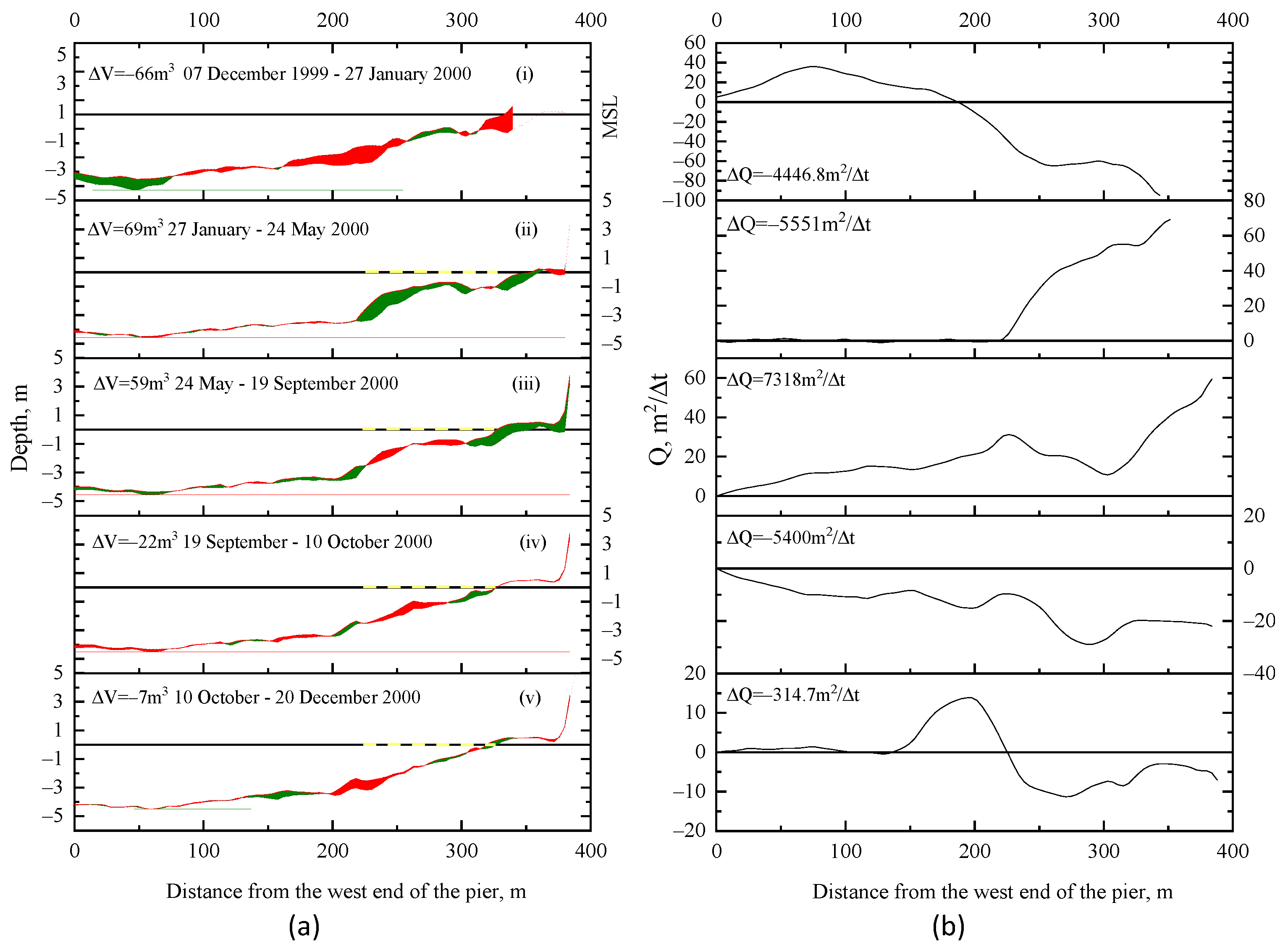


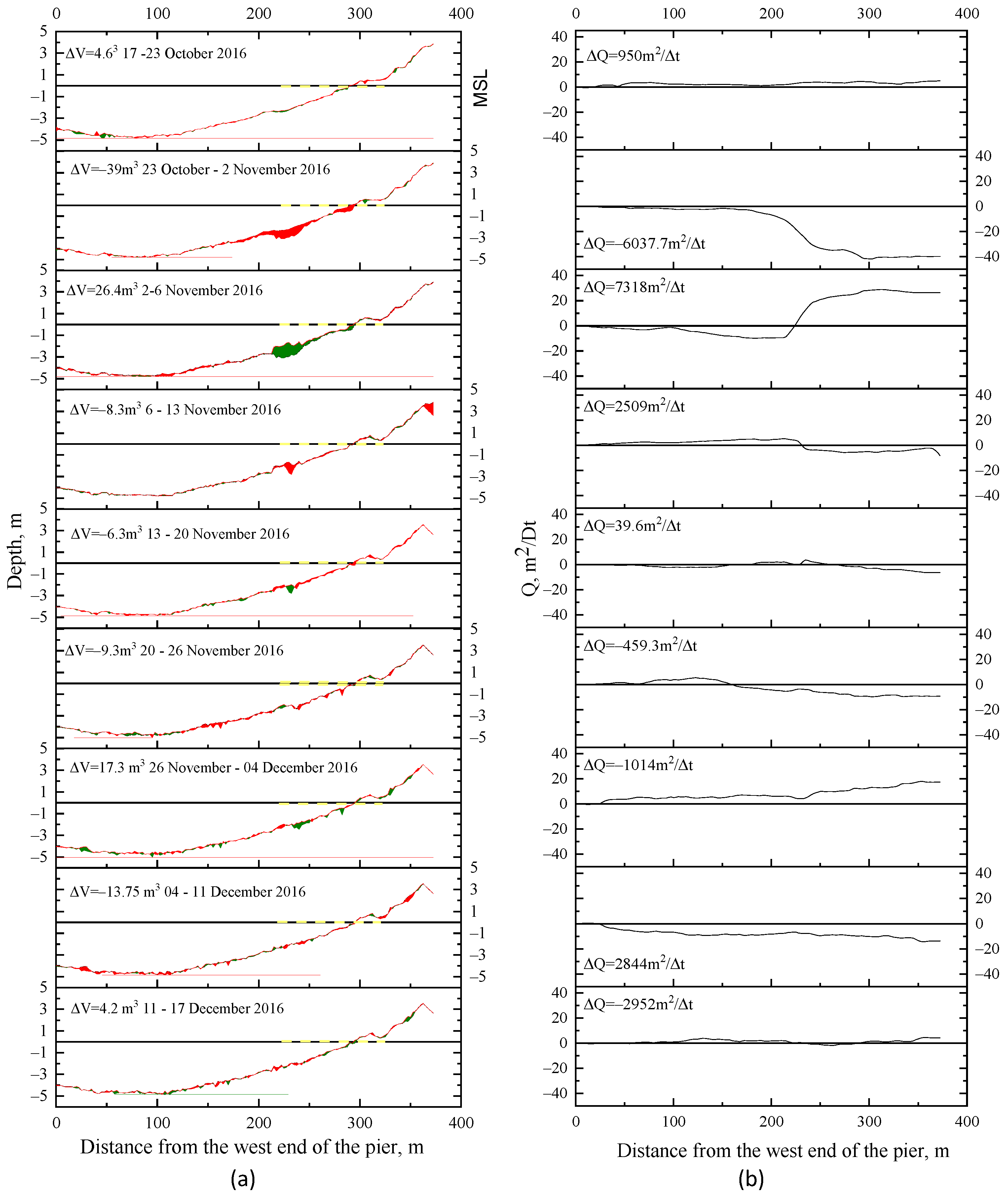

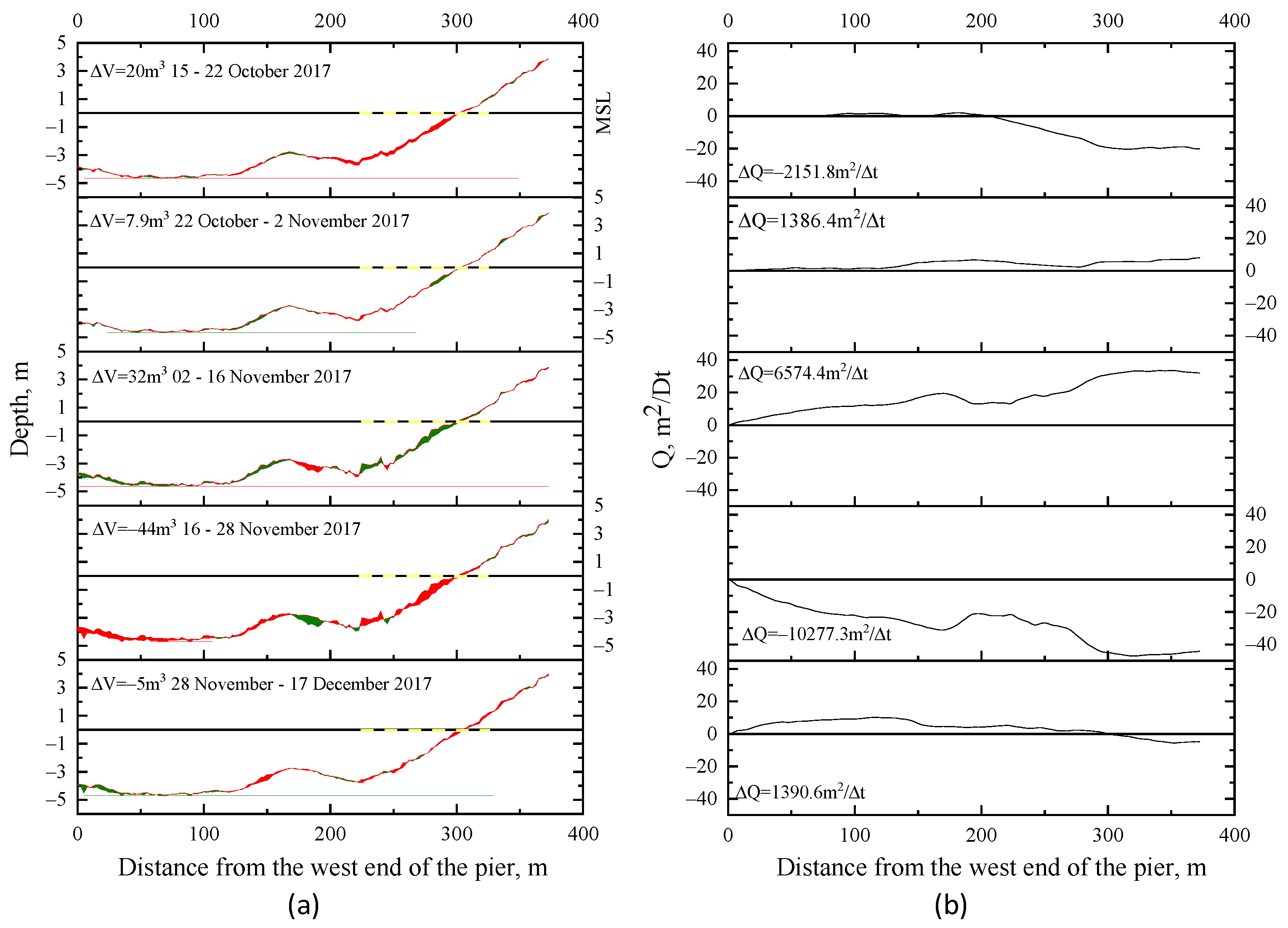
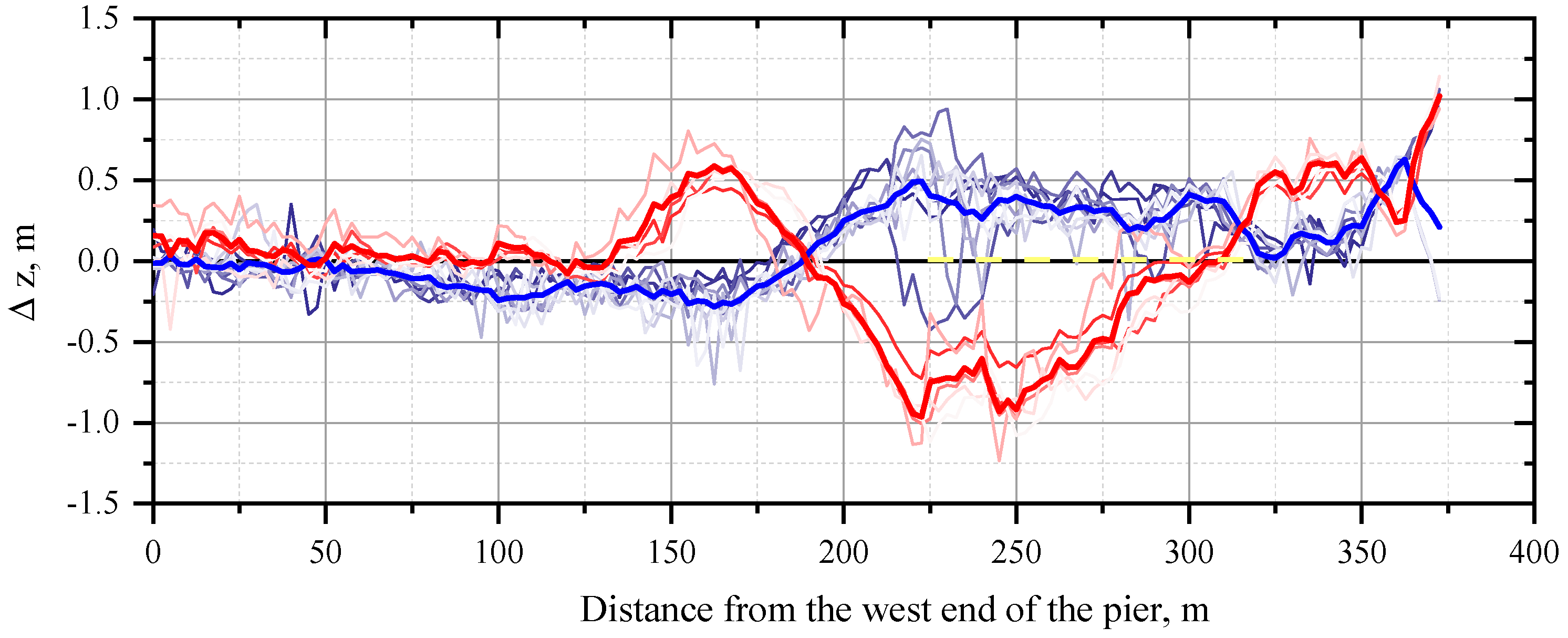
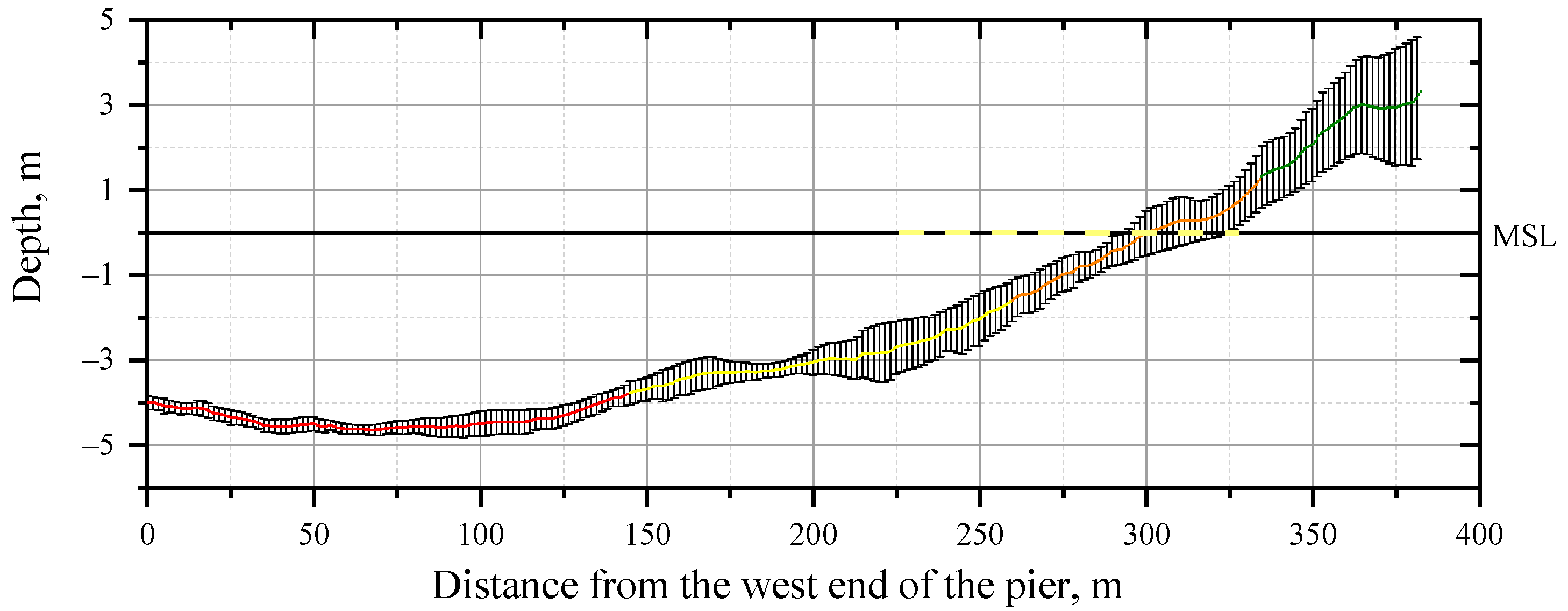
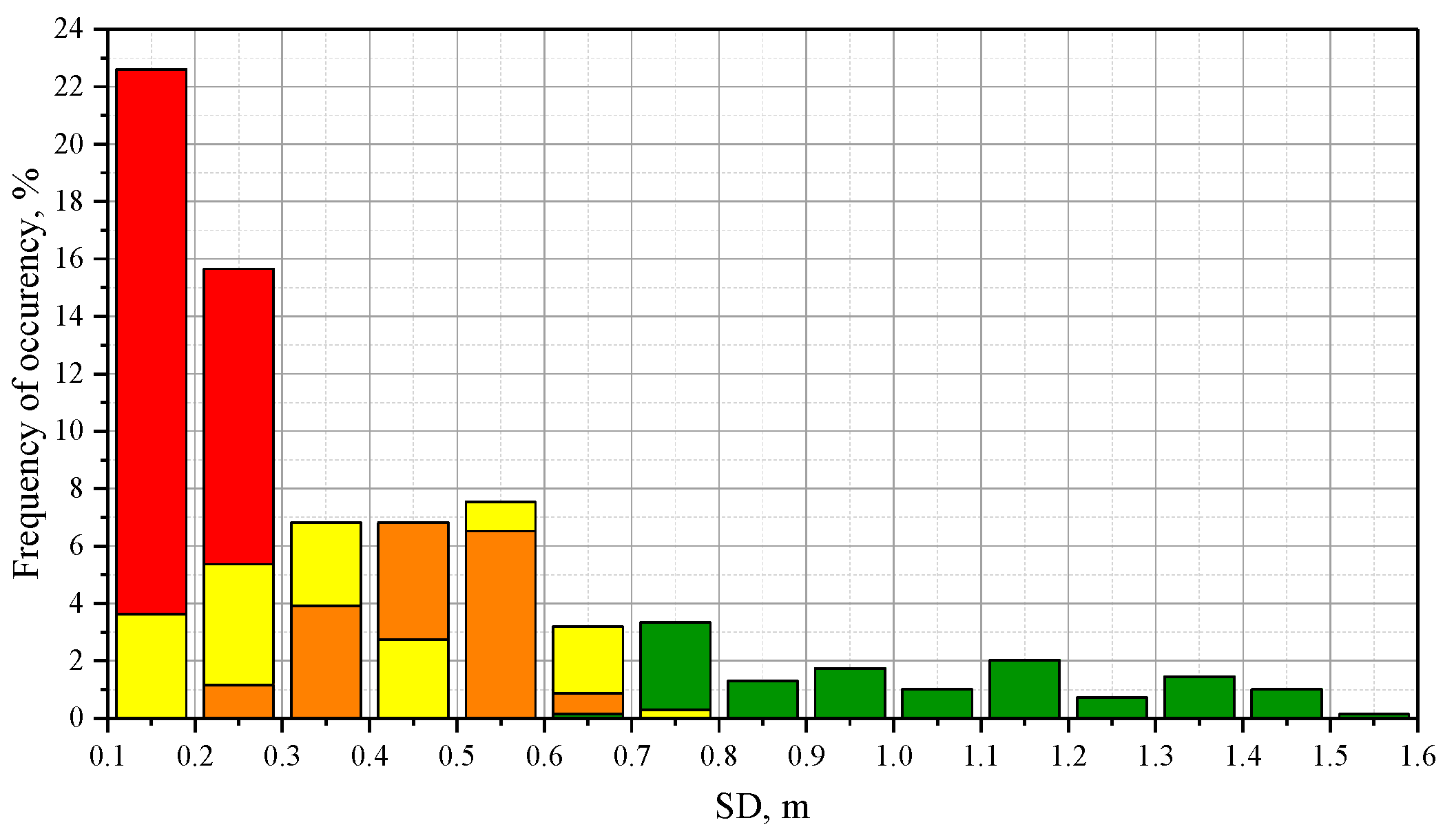
Publisher’s Note: MDPI stays neutral with regard to jurisdictional claims in published maps and institutional affiliations. |
© 2021 by the authors. Licensee MDPI, Basel, Switzerland. This article is an open access article distributed under the terms and conditions of the Creative Commons Attribution (CC BY) license (http://creativecommons.org/licenses/by/4.0/).
Share and Cite
Kelpšaitė-Rimkienė, L.; Parnell, K.E.; Žaromskis, R.; Kondrat, V. Cross-Shore Profile Evolution after an Extreme Erosion Event—Palanga, Lithuania. J. Mar. Sci. Eng. 2021, 9, 38. https://doi.org/10.3390/jmse9010038
Kelpšaitė-Rimkienė L, Parnell KE, Žaromskis R, Kondrat V. Cross-Shore Profile Evolution after an Extreme Erosion Event—Palanga, Lithuania. Journal of Marine Science and Engineering. 2021; 9(1):38. https://doi.org/10.3390/jmse9010038
Chicago/Turabian StyleKelpšaitė-Rimkienė, Loreta, Kevin E. Parnell, Rimas Žaromskis, and Vitalijus Kondrat. 2021. "Cross-Shore Profile Evolution after an Extreme Erosion Event—Palanga, Lithuania" Journal of Marine Science and Engineering 9, no. 1: 38. https://doi.org/10.3390/jmse9010038
APA StyleKelpšaitė-Rimkienė, L., Parnell, K. E., Žaromskis, R., & Kondrat, V. (2021). Cross-Shore Profile Evolution after an Extreme Erosion Event—Palanga, Lithuania. Journal of Marine Science and Engineering, 9(1), 38. https://doi.org/10.3390/jmse9010038




